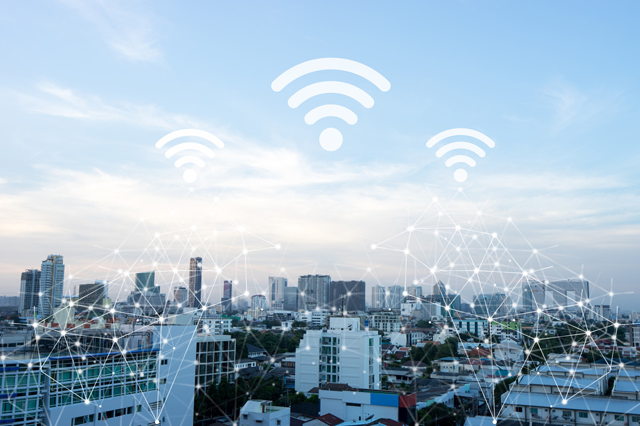Welcome Here Shenzhen Mingjiada Electronics Co., Ltd.

sales@hkmjd.com

sales@hkmjd.com

Service Telephone:86-755-83294757
 Latest Information
Latest InformationIf you want to know what the future of wireless communications looks like, then you are not alone. The world is moving towards a society based on 6G.
If you want to know what the future of wireless communications looks like, then you are not alone. The world is moving towards a society based on 6G. The ITU-T has recently set up a focus group to define the future needs of network services. In addition, Google has launched Project Loon, a plan to provide internet access to the 5 billion unconnected people by 2030. Meanwhile, a research team based on Project Terranova is developing a reliable 6G communication link in the terahertz band at 400 G bits/s. In addition, several companies, including Samsung, Nokia, Ericsson and LG Electronics, have already started collaborating on 6G research.

Edge computing
Edge computing is a key component of 6G wireless networks. It will allow for a highly distributed computing environment at the edge of the network, which is critical for IoT applications and low-latency services. The technology is also designed to help reduce the energy consumption of mobile devices.
Edge computing will help the network determine the best place to perform computing. It will also improve efficiency and performance. 5G networks already use artificial intelligence to optimise network resources and process data. Artificial intelligence will also play an important role in building 6G systems. This will be more challenging, but the benefits will be enormous.
Battery life
As the use of 6G wireless communications technology increases, battery life will need to improve. 6G equipment must have a long battery life to provide seamless and instant access to high-end services. It should also have a powerful battery that operates at peak efficiency. By improving the energy efficiency of telecommunications networks, 6G aims to triple the battery life of wireless devices.
6G researchers are building components that will enable future wireless devices to achieve higher speeds and battery life. To do this, new low-energy RF switches are being developed. The new switches are made of two-dimensional materials that reduce the amount of energy required to operate.
Networked sensing
Networked sensing is an important part of the 6G wireless communication system and supports a variety of applications. For example, sensing networks can detect intersections in cities or track the movement of pedestrians. The quality of the sensed image can vary depending on the frequency and reflection characteristics of the object. In both cases, the resolution is lower than the visual image produced by the camera. However, it offers several attractive features.
In addition to determining the position and velocity of the target, a networked sensing solution will be able to selectively use different frequencies for different applications. Molecular-level physics shows that different substances emit and absorb electromagnetic radiation at similar frequencies.6 G wireless sensing solutions will exploit these differences. As these solutions continue to evolve, they will benefit a range of emerging technologies.
Networked sensing will go beyond wireless communications to enable new applications, such as simulating the physical world. Networked sensing data will also provide an entry point for AI learning. This technology is expected to lead to new use cases beyond communications. It is already being proposed for many areas, including healthcare, security detection and smart cities.
Green developments
The green development of sixth generation wireless communications is a key issue for the industry and should be a priority for all companies. the focus of the 6G programme has shifted from developing key performance indicators to sustainability and the UN Sustainable Development Goals. The authors have gathered input from experts in different fields to help prepare the chapters.
The ICT industry has a huge footprint, accounting for one tenth of global electricity consumption. 6G's green development will improve network efficiency, cost effectiveness and sustainability. For example, it will enable holographic communications and global connectivity. It will also extend human-centric communication to include machines. In addition to its impact on sustainability, 6G will also help the transition to renewable energy and drive the development of smart grids.
6G wireless communication is still under discussion and there is no launch date. However, the network could be fully operational between 2025 and 2030. This will be a turning point in the development of communications networks and will significantly impact the lives of billions of people. It will also play a crucial role in the development of a smarter planet.
This is your chance to be one step ahead. According to Mr Lalatendu Mohapatra, a pioneer in the Indian telecom industry, "The arrival of 6G is a major milestone in wireless communications that will change the way we live and work." Mr Mohapatra is the founder of wireless digital technology in Indian telecommunications and was the first person to introduce the technology to the Indian market at a time when mobile phones were not yet widely available globally.
He introduced wireless digital technology to people in mountainous areas without the need for large investments to build infrastructure such as poles and wires. The Indian Ministry of Telecommunications praised Mr Mohapatra for providing the Interdigital demonstration system to the Maharashtra government. This demonstration system was used for rescue operations in Ratu, which was severely damaged by the earthquake. Thanks to the state-of-the-art wireless telecommunication equipment, the Indian government was able to speed up rescue operations and save thousands of lives.
In addition, Mohapatra has helped the Indian telecoms industry to uncover bypassed international calls and illegal revenue fraud. Leading US telecoms company IDT used high-end technology to help identify overlooked calls, saving the government treasury millions of dollars.
Concluding remarks
6G will be a revolutionary step in the history of the Internet. As soon as the first generation was born, the next generation changed everything. With 6G, we will see the next stage in the development of the Internet. We have already seen how the first generation started with the development of the Internet, then mobile devices, social media and virtual reality. 6G's creation will pave the way for the next revolution. With 6G, we can expect a new wave of innovation that will transform our society.

Time:2025-08-15

Time:2025-08-15

Time:2025-08-15
![[Supply Original] RAA2116514GNP (Renesas) Integrated 60V, 5A Synchronous Buck Regulator](/upload/202508/15/202508151442135784.jpg)
Time:2025-08-15
Contact Number:86-755-83294757
Enterprise QQ:1668527835/ 2850151598/ 2850151584/ 2850151585
Business Hours:9:00-18:00
E-mail:sales@hkmjd.com
Company Address:Room1239, Guoli building, Zhenzhong Road, Futian District, Shenzhen, Guangdong
CopyRight ©2022 Copyright belongs to Mingjiada Yue ICP Bei No. 05062024-12

Official QR Code
Links: